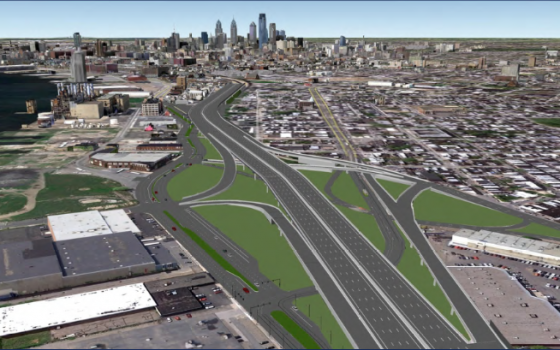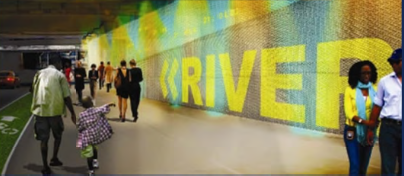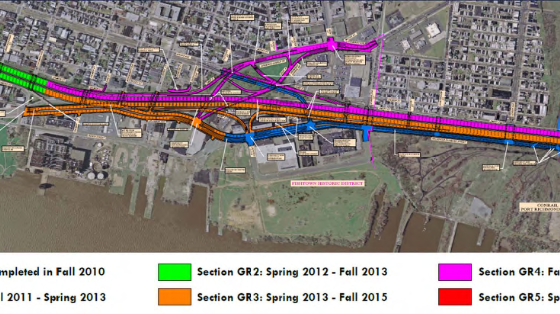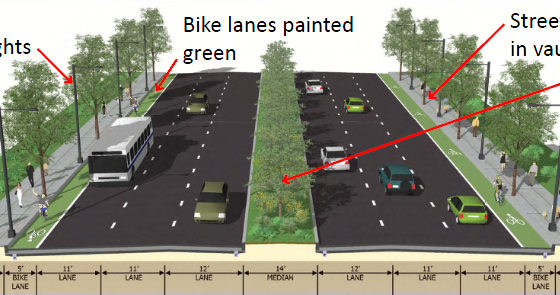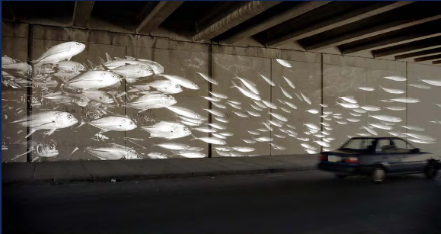Pennsylvania Department of Transportation (PennDOT) has been busy finalizing their plans for the reconstruction of the I-95 Girard Avenue Interchange. The project will separate the interchange into six sections (under six different construction contracts) along a three mile stretch which spans from Race Street to Allegheny Avenue. Construction, in all its six phases, will endure from fall 2010 up to fall 2019 and is projected to reach a total of $950M.
The project will place much of its emphasis on interchange expansion; widening the road, making it four continuous lanes throughout in both directions, while also providing an auxiliary lane which connects on-ramps and exit ramps between the interchanges of I-676 between Girard and Allegheny Avenues. Expansion is only one facet of the project; another primary goal is revitalization along the interchange, meaning reconstruction of nearly forty ‘60s era bridges along the stretch. Pedestrian lanes and bike lanes will be expanded and enhanced. In addition to making I-95 more accessible and free-flowing, the project intends to beautify its roads, bridges and the surrounding areas to make it a much more enjoyable road for travel. And while these modifications are important today, if not merely for driver sanity, they will become absolutely essential in the coming years; traffic flow on this stretch is projected to increase from 182K vehicles per day in 2011 to 228K by 2030.
Phase Two of the project will focus on high-level detailed design. The I-95 Project does not wish to interfere with community or waterfront projects, instead aiming to incorporate these projects into I-95’s framework through collaboration with these local organizations. Some of the principal goals of Phase Two are to enhance waterfront access, create opportunities for human scaled places and keep the design relevant to location and culture while also making everything as “green” as possible. This means utilizing LED streetlights, expanding bike lanes and planting trees along the street’s sidewalks as well as in the bio-swale median along Richmond and Delaware Streets. Well-lit underpasses will be revitalized by not only new bridges, but also by innovative designs with artful lighting and graphics that will indicate upcoming connections.
The I-95 Girard Interchange Project boasts innovative, extensive and grandiose plans that will be remarkable to see come alive in stages. If you would like to learn more about the project and organizations involved (and trust me, there is plenty more to know), check out their official website here. —Alex Graziano

